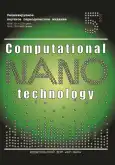Cloud Technology Security
- 作者: Bespalova N.V.1
-
隶属关系:
- Financial University under the Government of the Russian Federation
- 期: 卷 11, 编号 5 (2024)
- 页面: 124-132
- 栏目: METHODS AND SYSTEMS OF INFORMATION PROTECTION, INFORMATION SECURITY
- URL: https://journal-vniispk.ru/2313-223X/article/view/284858
- DOI: https://doi.org/10.33693/2313-223X-2024-11-5-124-132
- EDN: https://elibrary.ru/CBVYSL
- ID: 284858
如何引用文章
详细
The article is devoted to the relevance of the use of cloud technologies in the modern world; data on the size of the global market for public cloud services over the past two years is presented. The advantages of using cloud technologies are determined, the classification of cloud systems is considered. The main regulations governing the operation of cloud storage are given. Particular attention is paid to the issues of information security of cloud systems, the most dangerous attacks that are relevant in the field of cloud technologies are presented, their characteristic features and the possible consequences of their occurrence for users and organizations are described. As a solution for creating a cloud system with a high level of security, the concept of multi-level security has been defined, including encryption, multi-factor authentication, the use of the TLS protocol, protection against DDoS attacks, timely monitoring of infrastructure security risks and organizational security policy.
作者简介
Natalia Bespalova
Financial University under the Government of the Russian Federation
编辑信件的主要联系方式.
Email: NVBespalova@fa.ru
ORCID iD: 0000-0003-3733-3119
SPIN 代码: 1676-8226
Scopus 作者 ID: 57194131769
Cand. Sci. (Phys.-Math.); associate professor, Department of Information Technology, Faculty of Information Technology and Big Data Analysis
俄罗斯联邦, Moscow参考
- Komar R., Patil A. Emerging trends in cloud computing: A comprehensive analysis of deployment models and service models for scalability, flexibility, and security enhancements. Journal of Intelligent Systems and Applied Data Science. 2023. Vol. 1. No. 1.
- Toutov A. et al. Optimizing the migration of virtual machines in cloud data centers. International Journal of Embedded and Real-Time Communication Systems (IJERTCS). 2022. Vol. 13. No. 1. Pp. 1–19.
- George A.S., Sagayarajan S. Securing cloud application infrastructure: understanding the penetration testing challenges of IaaS, PaaS, and SaaS environments. Partners Universal International Research Journal. 2023. Vol. 2. No. 1. Pp. 24–34.
- Nanda A.K. et al. Securing Cloud Infrastructure in IaaS and PaaS Environments. In: Improving Security, Privacy, and Trust in Cloud Computing. IGI Global. 2024. Pp. 1–33.
- Gantsatsuk V.V. et al. Approach to organizing information security in the cloud. In: Information security of regions of Russia (IBRR-2021). 2021. Pp. 138–139.
- Bespalova N.V., Nechaev S.V. Ensuring information security of cloud storages. Security Issues. 2023. No. 2. Pp. 19–26. (In Rus.)
- Tonkikh A.S., Avksentyeva E. Yu. Security threats in cloud technologies and methods for eliminating them. International Journal of Humanities and Natural Sciences. 2024. No. 1-2 (88). Pp. 232–238. (In Rus.)
- Mironova A.O. et al. Application of methods for assessing threats to information security. Power Plants and Technologies. 2021. Vol. 7. No. 4. P. 71. (In Rus.)
- Maslova M.A., Kuzminykh E.S. Problems of cloud services and methods of protection against risks and threats. Scientific Result Information Technology. 2022. Vol. 7. No. 3. Pp. 14–22. (In Rus.)
- Akbarova M.R. Security and data protection in cloud technologies. Universum: Technical Sciences. 2022. No. 10-1 (103). Pp. 17–19. (In Rus.)
- Mazneva O.A., Volobuev A.A., Efremov M.A. Information security in cloud data storage. In: Modern information technologies and information security. 2024. P. 87.
- Nesterenko V.R., Maslova M.A. Modern challenges and threats to information security of public cloud solutions and ways of working with them. Scientific Result Information Technology. 2021. Vol. 6. No. 1. Pp. 48–54. (In Rus.)
- Kocheshkov A.A., Senkiv D.A. Information security of public cloud services. Scientific and Technical Bulletin of the Volga Region. 2020. No. 7. Pp. 70–72. (In Rus.)
- Alshamrani A. et al. A survey on advanced persistent threats: Techniques, solutions, challenges, and research opportunities. IEEE Communications Surveys & Tutorials. 2019. Vol. 21. No. 2. Pp. 1851–1877.
- Nikiforova A.A. Information security and cloud computing. E-Scio. 2021. No. 11 (62). Pp. 22–28. (In Rus.)
- Yakovishin A.D. Application of cryptographic technologies to protect information in cloud services. International Journal of Humanities and Natural Sciences. 2024. No. 1-2 (88). Pp. 245–249. (In Rus.)
- Semeko G.V. Information security in the financial sector: Cybercrime and counteraction strategy. Social Innovations and Social Sciences. 2020. No. 1. Pp. 77–96. (In Rus.)
- Bamrara A. Evaluating database security and cyber-attacks: A relational approach. Journal of Internet Banking and Commerce. 2015. Vol. 20. No. 2. Pp. 1–17.
- Canizo M. et al. Multi-head CNN–RNN for multi-time series anomaly detection: An industrial case study. Neurocomputing. 2019. Vol. 363. Pp. 246–260.
- Ahmed M., Mahmood A.N., Hu J. A survey of network anomaly detection techniques. Journal of Network and Computer Applications. 2016. Vol. 60. Pp. 19–31.
- Castillo D.P., Regidor F.M., Higuera J.B. et al. A new mail system for secure data transmission in cyber physical systems. International Journal of Uncertainty, Fuzziness and Knowledge-Based Systems. 2020. Vol. 28 (2). Pp. 23–48. DOI: 10.1142/ S0218488520400127.









